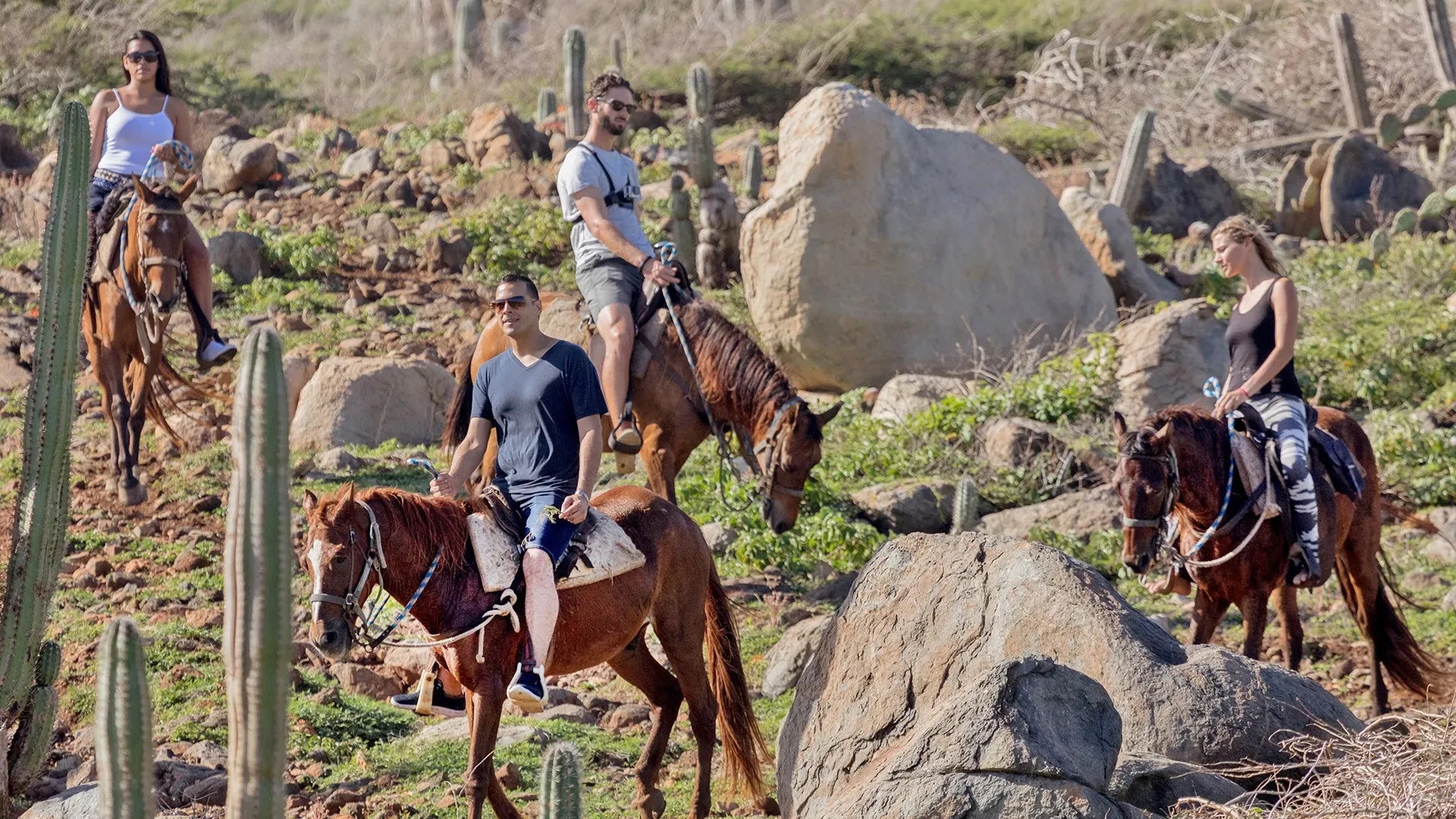Levente
September 19.
Been there. Done that.
Been there. Done that.
September 19.
Pastechi are Aruba’s go-to snack — flaky turnovers filled with cheese, meat, or tuna. They’re usually fried and slightly sweet, with fillings that vary from household to household.

Alternatively, use store-bought wrappers.
A good vegetarian swap. These are made with shredded cheese, herbs, breadcrumbs, and egg. Crisp outside, melty inside. Serve with papaya hot sauce or mango chutney.
Creamy and lightly spiced, this soup is a cozy starter with just enough island flair. It's often served with funchi or pan bati on the side.

Heat oil in a pot. Sauté onion, garlic, and celery until soft (about 5 minutes).
Add pumpkin cubes and broth. Bring to a boil, then reduce heat and simmer until pumpkin is soft (15–20 minutes).
Use an immersion blender (or transfer to a blender) and purée until smooth. Stir in coconut milk, nutmeg, salt, and pepper. Heat through and serve.
A traditional option for meat lovers. It’s a hearty stew made with beef tripe, root vegetables, and bold seasonings like garlic, oregano, and allspice. Not for everyone — but locals swear by it.
Keshi Yena is Aruba’s signature dish. Traditionally made by stuffing a hollowed Edam or Gouda rind with a spiced meat mixture, it’s now more commonly baked in a casserole dish. It’s rich, savory, and loaded with flavor.

Sauté onion, garlic, and bell pepper in oil. Add meat and cook until browned. Stir in tomato, paste, olives, raisins, and herbs. Simmer 5–10 minutes. Cool slightly.
Stir in shredded cheese and beaten eggs. Mix well.
Preheat oven to 350°F (175°C). Grease a small baking dish. Pour in mixture, top with extra cheese, and bake for 25–30 minutes until golden and set.
Swap the meat for a mix of:
Still hearty and flavorful — just without the meat.
Every Aruban meal needs a starchy side, and these are the classics. Pan bati is a soft, corn-based flatbread — somewhere between a pancake and cornbread. Funchi is firm Caribbean-style polenta, usually served in slices or scoops.

A close cousin to funchi, tutu adds black beans, sugar, and sometimes bits of bacon. It’s a side that works great with spicy mains and adds a bit of texture contrast.
This is Aruba’s most iconic dessert—a dense, rich layer cake made with ground cashews and often topped with a thick cashew cream. It’s sweet, nutty, and often served at weddings and holidays.

Cream butter and sugar until fluffy. Add eggs one at a time. Stir in vanilla. Mix flour, baking powder, salt, and ground cashews. Alternate adding dry mix and milk to the batter.
Pour into a greased 9-inch round or loaf pan. Bake at 350°F (175°C) for 35–40 minutes, or until golden and a toothpick comes out clean.
Warm all glaze ingredients in a small saucepan. Stir until smooth. Pour over cooled cake or serve on the side.
If you want something lighter or quicker: Quesillo is a silky caramel flan made with eggs, condensed milk, and vanilla. It’s sweet, tropical, and easier than it looks. Also: great make-ahead option.
Ayaca is a Christmas and New Year’s tradition in Aruba — banana leaf–wrapped parcels filled with a spiced meat mixture, raisins, olives, and cornmeal dough. It’s a labor of love, usually made in big batches with the whole family.

Mix cornmeal, salt, and water until soft dough forms. Add oil. Set aside.
Sauté onion, garlic, and bell pepper in oil. Add meat, tomato paste, raisins, olives, and spices. Cook until thick and fragrant. Let cool.
Place a banana leaf or parchment square on your surface. Spread a scoop of dough in the center. Add 2–3 tbsp of filling. Fold and tie like a parcel.
Place in a steamer or pot with boiling water. Steam for 30–45 minutes, until dough is firm and set.
Replace the meat with:
Still festive and full of flavor.

You don’t need to live near a Caribbean market to pull this off. Here’s where to look:
Pro tip: If you can’t find something, don’t stress. A simple swap (like polenta for funchi or cheddar for Gouda) keeps the vibe intact.
Pair your meal with drinks that match Aruba’s tropical, bold flavors:
Don’t forget Awa di Lamunchi — Aruba’s homemade limeade. It’s tart, sweet, and goes with everything.
Make it feel like you’re back on the island:
It doesn’t have to be fancy — just relaxed, colorful, and shared.
Recreating a 6-course Aruban meal at home isn’t about perfection — it’s about capturing the flavors, the warmth, and the spirit of the island in 2025. Whether you follow the full menu and the Aruba food recipes or just try one dish at a time, every bite brings back a little sunshine.
If you cooked along, share your version or swap in your own twists. Aruba’s food, just like the island itself, was made to be shared.
A traditional Aruban meal often includes dishes like pastechi (stuffed pastries), sopi di pampuna (pumpkin soup), keshi yena (stuffed cheese casserole), pan bati (corn flatbread), and bolo di cashupete (cashew cake). Meals mix Dutch, Caribbean, and Latin flavors, often with bold spices and comforting textures.
Many locals consider keshi yena Aruba’s national dish. It’s a rich casserole made with melted cheese (usually Gouda or Edam) and a spiced meat filling. Vegetarian versions are popular too, using lentils, beans, or vegetables instead of meat.
No! Most Aruban dishes use simple ingredients like cornmeal, pumpkin, cheese, and basic spices. You can also substitute ingredients — like polenta for funchi or cheddar for Gouda—if you can’t find Caribbean-specific items locally.
Look for items like coconut milk, plantains, masarepa (cornmeal), and Caribbean hot sauces at:
Most large supermarkets will carry Caribbean ingredients in 2025.
Try awa di lamunchi (Aruban limeade), tropical juices like mango or passionfruit, or rum-based cocktails. For something stronger, pair dessert with Aruban coffee or aged Caribbean rum.

Creating this travel magazine takes an insane amount of time and money. If you’ve found it useful and would like to support me in helping other travelers like you, your donation would go a long way. Thanks, you’re the best!







